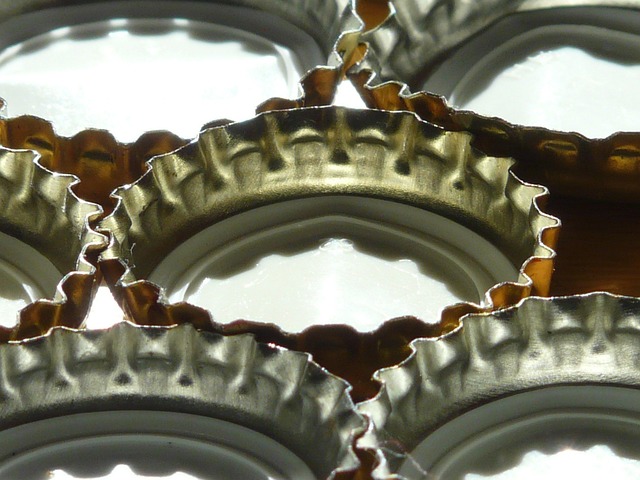Automated nesting, leveraging advanced algorithms on fabrication shop drawings, optimizes material usage, cuts waste, and reduces costs in manufacturing. This strategy ensures efficient production planning, streamlines processes, minimizes scrap, and boosts productivity while adapting to changing product demands. By integrating specialized software and experienced personnel, manufacturers can achieve significant material savings and cost reduction in fabrication shop drawings.
In today’s competitive manufacturing landscape, material optimization is crucial for cost reduction and efficiency. Automated nesting, a game-changer in fabrication shop drawings, revolutionizes material management by intelligently arranging parts to minimize waste and maximize yield. This article delves into the transformative impact of automated nesting, exploring its role in reducing costs, improving productivity, and enhancing overall operational effectiveness. By implementing these advanced systems, manufacturers can navigate the intricate world of material optimization, ensuring a competitive edge in the market.
Understanding Material Optimization and Its Impact on Cost Reduction
In the realm of manufacturing, material optimization is a game-changer when it comes to cost reduction. It involves a strategic approach to selecting, using, and managing materials to meet production needs while minimizing waste. By meticulously analyzing every aspect of a fabrication shop drawing, from design specifications to scrap rates, automated nesting plays a pivotal role in achieving this balance. This technology allows for the efficient arrangement of parts on a material sheet, maximizing yield and reducing material costs.
The impact of material optimization on cost reduction is profound. It not only cuts down on raw material expenses but also streamlines production processes by minimizing scrap. Automated systems can quickly adapt to changing product demands, ensuring that materials are used optimally without excess. This precision translates into significant savings for manufacturers, making it a key strategy in today’s competitive market.
The Role of Automated Nesting in Fabrication Shop Drawings
Automated nesting plays a pivotal role in optimizing material usage and cutting costs within fabrication shops. By employing advanced algorithms, this technology intelligently arranges parts on a fabricating surface, minimizing waste and maximizing material utilization. In essence, automated nesting transforms fabrication shop drawings into efficient, data-driven layouts.
In the realm of fabrication shop drawings, automated nesting streamlines processes by automatically calculating part placement, reducing manual effort, and minimizing errors. This not only expedites production planning but also ensures consistent quality. Through precise material allocation, it helps fabricators achieve significant cost savings while maintaining high productivity levels, making it an indispensable tool for modern manufacturing operations.
Benefits of Implementing Automated Nesting Systems
Implementing automated nesting systems offers a multitude of benefits for fabrication shops, enhancing efficiency and reducing costs in several significant ways. By leveraging advanced algorithms, these systems optimize material usage by precisely arranging parts within a given space, minimizing waste. This not only reduces material costs but also has a direct positive impact on the environment by lessening the need for raw materials.
Additionally, automated nesting streamlines the planning process, as it can generate optimized shop drawings in a fraction of the time required for manual methods. This increases productivity and ensures that fabrication processes are more accurate and consistent. Moreover, these systems adapt to changes in production schedules or part variations with ease, providing flexibility that is crucial in dynamic manufacturing environments.
Best Practices for Effective Automated Nesting in Material Management
To achieve effective automated nesting for material optimization and cost reduction, several best practices should be followed. First, integrate advanced nesting software with your fabrication shop drawings to ensure precise material utilization. These tools use algorithms to analyze part dimensions and arrangement, minimizing waste and maximizing yield. Additionally, regular calibration and update of nesting software are crucial to account for changes in material properties or new design requirements.
Second, involve experienced personnel in the process to oversee the automated nesting algorithm. Human expertise can help identify potential issues or optimize configurations that may not be immediately apparent to the software. Collaborating between designers, engineers, and material handlers ensures that automated nesting practices align with overall production goals and yield the best results. This collaborative approach, combined with continuous software updates, leads to significant material savings and reduced costs in fabrication shop drawings.
Automated nesting systems have emerged as a powerful tool for fabricators, revolutionizing material management and production efficiency. By integrating automated nesting into fabrication shop drawings, businesses can achieve significant cost savings without compromising quality. The benefits are clear: optimized material usage reduces waste, minimizes overhead costs, and streamlines the entire process. With best practices in place, such as regular system calibration and material library updates, fabricators can ensure accurate, efficient nesting, leading to a competitive edge in today’s market.
